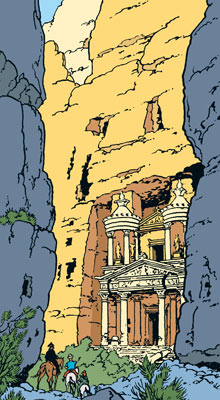Having had some time to reflect on the requirements of the brief and research around the topic, I had come up with a few initial ideas and angles for the book.
I was thinking of creating a slightly tongue-in-cheek 'survival guide' as I know TV programmes such as those Bear Grylls fronts are very popular at the moment, and children have always wanted to explore the outdoors and believe they're born survivalists (I know I did!). For this reason I had a concept in mind of a book called '
How to Live... in your Garden'. Originally I had thought of 'How to Live in the Woods' but I wasn't sure about it, as although it ties into the Naturesbase experience nicely, not every child has ready access to woods unless they're on an adventure holiday and I didn't want to encourage kids actually living in the woods.
Although I haven't currently mocked up any pages, I have envisioned using paper engineering techniques in the book, with pop-ups, lift the flaps and pull tabs. Some of the content that I have thought of using are identification guides to identify animal prints or poo, finish-your-own maps, and little activites. I want to take a light-hearted and tongue-in-cheek view to the book as I wouldn't have liked the feeling of being preached to at that age, and would rather the book laughed along with me. However, there would have to be enough to the book to ensure that there were actual activities and that it fulfilled its use and didn't make too much fun of itself.
While I was thinking of ways to develop this, I received an email with an attachment from the client, Gyles Morris, who had a clearer idea of what he wanted than I was expecting. He had stipulations for each age group, and definite ideas of the content:
Early Years (0-5)
Concept:
The importance of creative play in nature for child development when we are young.
Guidance for parents and carers with ideas to support children's creative learning.
Key words:
Very active, doing, looking, touching, pointing, brain development, creativity, nature deficit disorder, visual spatial learning, child development, feeling
Size and type:
A4, development to digital format
Type of learner:
Adults across the ability and experience spectrum, needs to be accessible and applicable to Early Years workers
Example Page:
How we find our way in life and develop language through seeing, hearing and remembering.
Development of visual literacy, visual spacial thinking
Needs good visuals and diagrams to support.
Other notes:
What we can do when taking children to the park, the supermarket etc
Thoughts
This really doesn't sound like the route that I want to take with the book, and sounds more like they want a book for adults that the child is going to have very minimal involvement with. I took this module as I would love to work in children's book publishing, and so I would rather find an angle that appeals more to the child reader.
5-7 Year Olds
Concept:
For children and adults to use and read together
Takes children around the world on a journey in a balloon to six different countries
Shows different games they play and their environments
Key words:
Countries; India, China, Peru, Australia, Norway and UK
Size and type:
A4, Interactive
Type of learner:
Should support younger children who learn through visual styles
Supporting pages for parents
Example page:
Colourful diverse landscapes
Not too stereotypical
Activities to make, such as journey stick, head dress, kite, dragon sculpture
Other notes:
Interactive, with environmental concerns
Thoughts
This is an idea that I could definitely consider, and am already thinking of art styles that could work with washed watercolours and Illustrator work giving contrasting options. This sounds quite similar to a book I'm working on at the moment for my Independent Study and could definitely provide options to express myself.
7-11 Year Olds
Concept:
Encourage children to investigate their environment
No adult help
Key words:
Adventure, explore, collect, clues, evidence, excite, search, create, solve mystery
Size and type:
A4, interactive
Type of learner:
Visually active
Example page:
Trail and tracks
Maps and journeys
'Did you know?'
Thoughts
I feel that this is actually very similar to the style that I had envisioned, and I hope that my idea can fit in with this to create an amalgamation that appeals to the client. My book idea has a detective vibe to it, and I was thinking of including a dog character as the child's 'Watson', which fits in with the idea of the child exploring the environment with their friend. This is the age group and essentially the idea that I had in mind so I think this is the one to start visualising.
I enjoy both illustration and graphic design and feel I am developing a certain style with each. I am writing and illustrating a picture book at the moment which is entirely hand-created, including lettering, while my design work tends to be almost entirely Illustrator-based, using infographics for inspiration. I am not sure at this point which art style will lend itself more to this project.



























